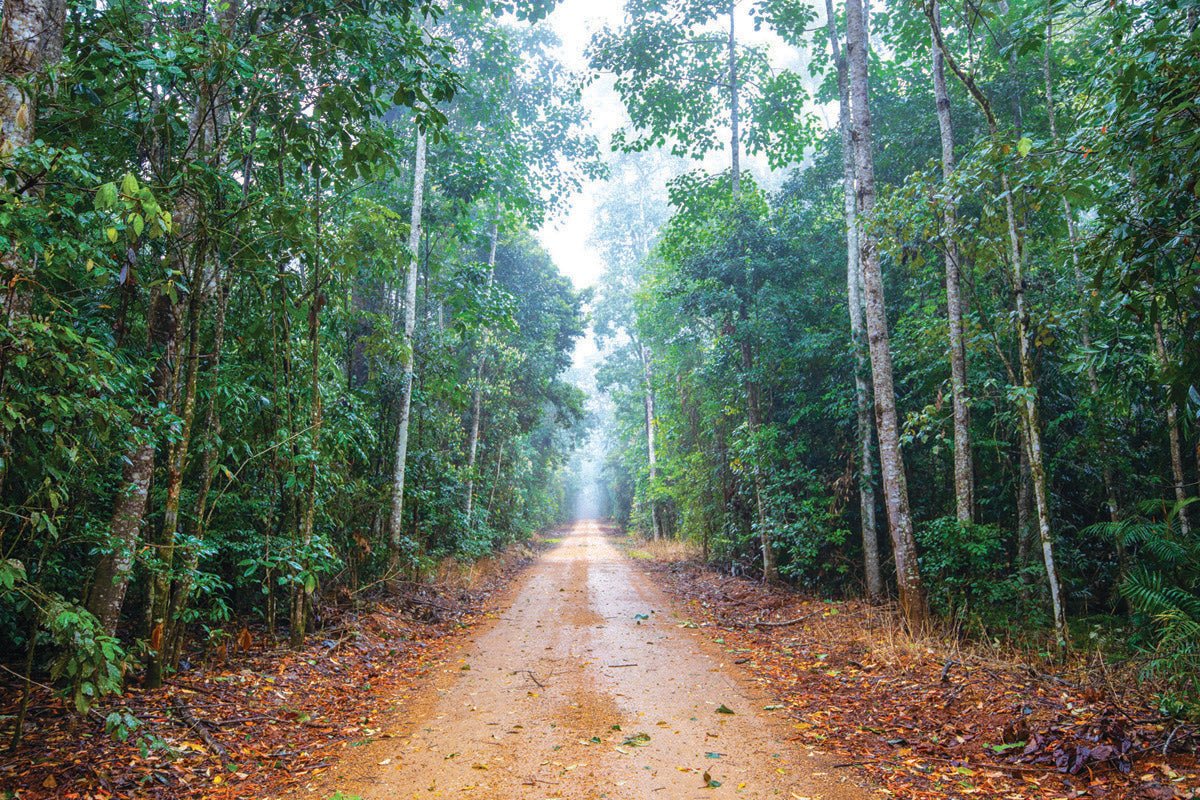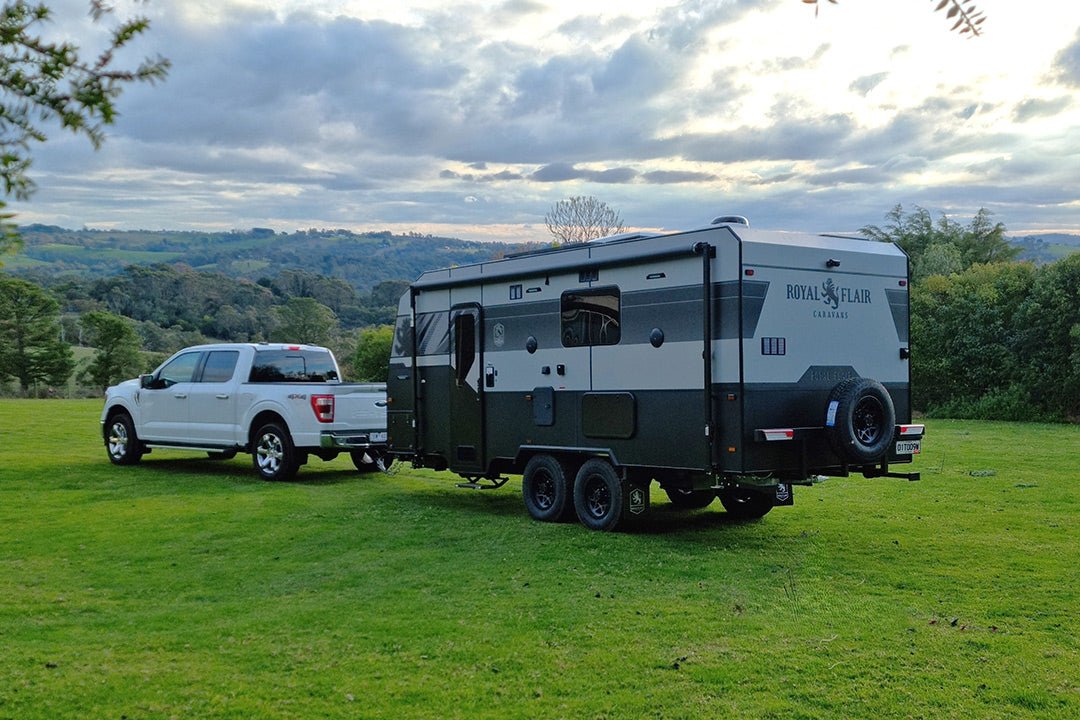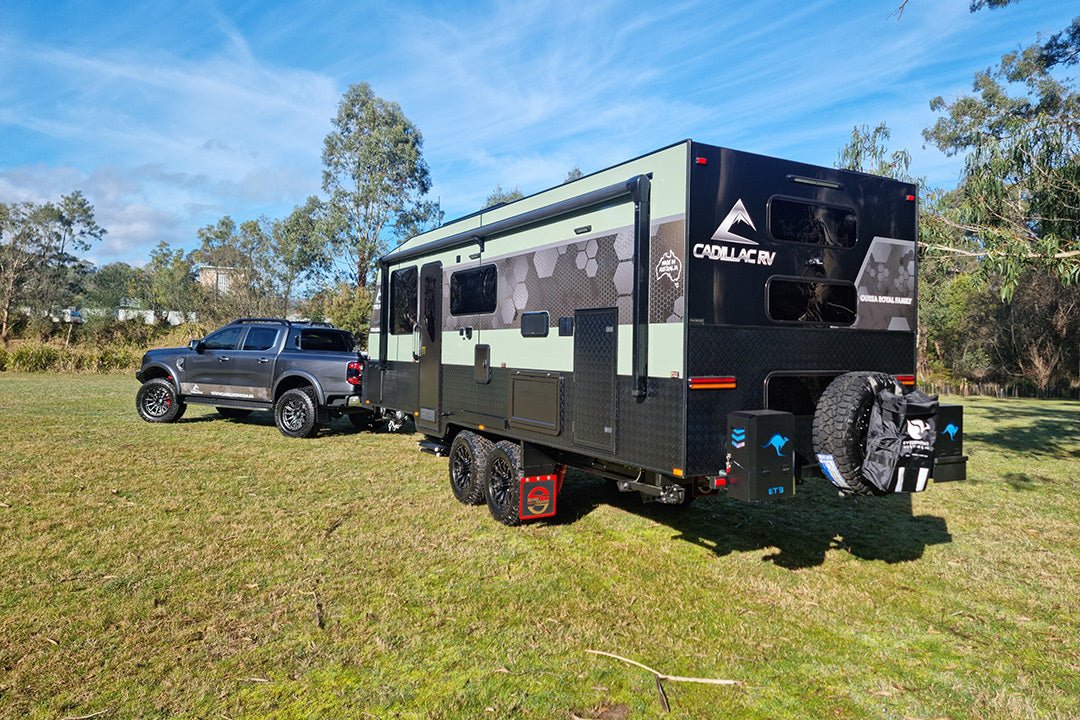Atherton Tablelands, QLD

Having travelled from the NT across the Gulf Savannah, past some of Queensland’s flattest, dustiest and most remote expanses, the green hills and damp air of the Atherton Tablelands provided us with an immediate sense of relief. This fertile region, characterised by rainforests, grassy plains and wetlands, is full of bucket-list attractions and soul-stirring activities.
While notably being home to the Wet Tropics — a World Heritage area and the oldest continually surviving tropical rainforest on Earth — it is, at the same time, the motherland of many less acknowledged attractions, including more waterfalls than you ever thought possible and the humble crops that fill our supermarket aisles and fruit bowls.
TO THE PEAKS AND BEYOND
Keen hikers tend to obsess over mountain ranges. If there is a hill, it must be climbed; if there is no hill, why are you there at all? Thankfully, the various peaks that tower up from the Tablelands plateau are enough to satisfy even your fiercest mountain cravings.
At 1622m tall, Mount Bartle Frere, the tallest mountain in Queensland, will have eager and experienced walkers strapping on their boots quick-smart. The simpler and more recommended Eastern approach begins at Josephine Falls and navigates through creeks, dense forest and steep rocky scrambles to ultimately provide an above-the-clouds view across Far North Queensland’s hinterland, coast and islands. Allow 10 to 12 hours to complete the 15km return hike, and only embark with ample food and water.
Alternatively, views can be achieved at the highest point on the 12km return Stewart Head Trail, taking off from the Herberton Mining Museum. Beyond the abandoned mineshafts, there’s even a (sketchy) swinging chair at the peak, connected to tree branches with rope, which is said to have been positioned some time ago by a man proposing to his partner. Other world-class hikes include Kahlpahlim Rock and Walsh’s Pyramid, both with steep, slippery ascents that are not for the faint-hearted. For more adventure inspiration in the area, follow @reubennutt on Instagram.
On these less established, more adventurous hikes — more a jungle-bash than a walk sometimes — be sure to bring salt (to remove blood-sucking leeches), tweezers (in case you need to remove a tick — we had two burrowed in our skin after the Kahlpahlim Rock hike) and sticky tape (to pull out the tiny plant hairs in case you brush against a Gympie-Gympie plant). A run-in with one of this plant’s heart-shaped leaves is by all accounts horrific. Victims have described the pain as worse than a burn, with some people requiring hospitalisation and enduring symptoms for months after the incident. Bottom line, when in the forest wear long, protective clothing — but keep it breathable!
FAMILY-FRIENDLY FUN
Those less interested in aching calves and sweat-drenched clothes look towards the abundance of shorter and flatter walks available. Lake Eacham and Lake Barrine in Crater Lakes National Park offer pleasant waterside circuit trails totalling 4km and 5km respectively. Both lakes have geographical significance, being volcanic maars that were formed by explosions some tens of thousands of years ago. They’re bordered by scenic rainforest and, when peering into the vivid blue/green water, you can see thick tree roots extending from the banks underwater. At Lake Barrine, you can find two towering bull kauri pine trees measuring 45m tall.
Speaking of otherworldly trees, a short boardwalk stroll near Yungaburra will take you to the heritage-listed Curtain Fig Tree. This strangler fig species typically germinates on a pre-existing tree trunk and then grows around the existing host, eventually taking it over completely and ultimately knocking it off. This Curtain Fig is especially unique because, when it carked it, the host tree tilted onto a neighbouring tree, which the fig then grew around to create a curtain of aerial roots that plunge to the ground. Same same but different is the Cathedral Fig Tree in Danbulla State Forest, which has a more upright structure. Standing below these epic natural wonders is a sobering experience.
In case you prefer wheels over walks, there are plenty of rocky and radical trails at the Atherton Forest and Davies Creek Mountain Bike Parks. Heading here after heavy rainfall will get the tyres extra muddy on the thrillingly steep downhill tracks. Meanwhile, those with a tinny on their roof-rack tend to head to Lake Tinaroo. The result of damming the Barron River in the 1950s, and now part of a fish-stocking theme, the lake has transformed into the boon of barramundi anglers. Just make sure you book a permit before snagging your lures!
WIILDLIFE WORTH WAITING FOR
You might like to pre-book a neck massage for the end of your trip in the Tablelands. Not only will you be craning your neck to gaze at fig stranglers and dense rainforest canopies, you’ll be keeping your eyes in the direction of the sky for any chance of spotting a rare tree kangaroo. Sightings have occurred all around the Tablelands, but also commonly occur at Mount Hypipamee and Malanda Falls Conservation Park. These unique mammals share their ancestry with rock wallabies, but at one point of time evolved to be able to climb trees, making them wonders of evolution — or mere koala copycats? Their strong hindlegs and forelimbs allow them to leap up to 9m downward from one branch to another and they regularly eat tree fruit or sleep at heights of more than 20m. Better start warming up those neck muscles now!
Southern cassowaries are another animal to look out for. While we may describe them as an emo Big Bird given their weight of around 50kg and height of up to 2m, cassowaries are more scientifically referred to as flightless birds with close relation to emus and similarities to ostriches. They’re unanimously understood as one of the world’s most dangerous birds thanks to their serious attitude problem which is relatable to your drunk Aunt. Your best chance of seeing one of these beautifully beastly creatures is Danbulla National Park or Gadgarra National Park, in the heart of the Wet Tropics.
Around waterways, keep your eyes peeled for platypus rising to the surface and paddling along muddy riverbeds. A tip-off from a local lead us to Peterson Creek in Yungaburra, where we spotted one of the semiaquatic monotremes on the Wildlife and Botanical Walking Track after patiently waiting on the bank. You’ll up the likelihood of an encounter if you visit the creek, or the Yungaburra Platypus Viewing Platform, at dusk or dawn.
Besides these sought-after species, the tropical Tablelands are also home to green ringtail possums, tree frogs, the threatened mahogany glider, carpet pythons, and a constant presence of bush turkeys rustling in the nearby leaves.
WATERFALLS BY THE DOZEN
It comes as no surprise that a region with an average annual rainfall of around 1500mm is abundant with flowing streams of water. Among some of the most popular and easily accessed (requiring only short walks from the carpark) are Dinner Falls in Mount Hypipamee National Park, Millstream Falls near Ravenshoe, Mungalli Falls nearby Mungalli Education Centre, and Barron Falls (best viewed in March) near Kuranda. A little harder to reach are Nandroya Falls, Silver Falls and Tchupala Falls, which can all be found from the same trailhead beside the Palmerston Highway. A 6km round trip on foot will let you see these impressive and mossy cascades.
Millaa Millaa Falls, Zillie Falls and Ellinjaa Falls can all be accessed on the popular 17km Waterfall Circuit, starting just 2km east of Millaa Milla township. Our top pick of the plentiful waterfall bunch was Ellinjaa Falls, with its lush swaddling of fernery and shallow rocky stream making it a photographer’s fantasy. While in the area, check out Millaa Millaa Lookout on East Evelyn Road for a panoramic view of the district.
If you’ve come from humid Cairns or the sun-baked outback, you might be desperate for a dip. Malanda Falls is a short cascading waterfall leading into a man-made plunge pool, so it is one of the safest swimming spots for kids in floaties and adults that are beyond the days of rock hopping.
Windin Falls, in Wooroonooran National Park, can be reached via the Old Cairns Track and then a 5.6km hiking trail. At the end of the walk, a steep and slippery descent takes you to the cliff-edge from which the falls drop. By taking off your shoes, you can wander across even more slippery rocks to enter a small natural pool beside the cliff with a supreme vista into the misty ranges. Despite the effort involved in reaching these falls, many fit travellers break a sweat for the return of a picturesque selfie in the infinity pool — some even setting their alarms as early as 4am to make it before the sun rises above the rainforest. Just beware of the drop.
FIT FOR A FEAST
Hiking, wildlife watching, swimming, and sightseeing are guaranteed to work up an appetite, so it’s lucky that the fertile volcanic soil, warm temperatures and ever-present rainfall in this region allows for a thriving agricultural environment. In fact, you’ll struggle to name a product that doesn’t grow in the Tablelands. From dairy and beef farms, banana farms, and berry farms, to coffee and tea plantations, there is something to satisfy even the fussiest foodie.
At the Nerada Tea Estates, you can enjoy a pot of fresh, home-grown Earl Grey while looking out at the 360 hectares of plantation where 6.6 million kilograms of tea is harvested, fermented, dried and packaged every year. Don’t forget to snag some bags at wholesale prices to enjoy with your own whistling kettle later.
But remember the best English Breakfast is made with a splash of milk, so you’d best visit Mungalli Creek Dairy for a taste of its award-winning organic dairy products. Its rich milks and yoghurts are biodynamic (aka no nasty stuffs), so you can enjoy a guilt-free, locally made treat at the cafe in Ellinjaa overlooking the Johnston River Gorge.
For a different take on farming, visit the Windy Hill Wind Farm – the first wind farm built in Queensland — which is constructed on an extinct volcano. The 20 wind turbines capture the strong winds that seep into the volcano’s bowl.
Then, once the day is done, treat yourself to a classic hotel meal at Queensland’s highest pub, the Ravenshoe Hotel, in the state's highest town, Ravenshoe.
WET, WHACKY AND WONDERFUL
For those who can brave a splash of rain and stare fearlessly into wild forests, a request for time off work or an allocated stopover on your big lap to explore the Atherton Tablelands will be worthwhile. Regardless of where you’ve travelled from, the pitter patter of rain falling through layers of ferns is always a welcoming soundtrack from inside your tent or van, just as sumptuous pastures are a refreshing sight out the car window.
While being the reason this region is so enticing, the Tablelands’ mountainous landscape can make for tricky caravan navigation and fuel-guzzling uphill slogs, so many travellers will prefer to elect a base to unhitch and venture from each day. There is always more to do and more to unearth in this sweeping region — we’ve only scratched the surface — and certainly enough to keep a couple or family occupied for a week or more.
FAST FACTS
PLANNING YOUR TRIP: The Atherton Tablelands covers a large area in the North Queensland hinterland, from Tully Gorge in the South to Danbulla National Park in the North. Some attractions are best accessed via the inland National Highway 1, while others are exclusively accessed on the more coastal Bruce Highway. Hence, you may like to complete a loop circuit from Townsville to Cairns and return.
BEST TIME TO TRAVEL: March through October are commonly recognised as the best months for touring. During this time, there will be more blue skies and moderate temperatures. On the other hand, the wet season (or the green season) will be when waterfalls are flowing heaviest and the rainforest is thriving.
WHERE TO STAY: There are several full-facility caravan parks in the Tablelands where you can unhitch the van or trailer while you explore during the day. Our favourite parks include the BIG4 NRMA Atherton Holiday Park (unpowered sites from $24 per night when staying two nights or more, powered from $35 per night) in Atherton, and the Malanda Falls Caravan Park (unpowered sites from $24 per night, powered from $30 per night) featuring a petting zoo and walking access to the falls. For a rich hinterland experience, you can stay at one of many national park campsites, including several alongside Lake Tinaroo, the Henrietta Creek campground in Wooroonooran National Park, and the Tully Gorge campground (all $6.75 per person, per night). There’s some good freecamps too, including one below Ravenshoe, for example.
SUPPLIES: Fuel and groceries are available at most towns in the Tablelands, but best prices can usually be found at chain suppliers in Atherton. Be ready to stop on the side of the highway to grab some fresh fruit direct from the farmers at one of many honesty box produce stalls.







